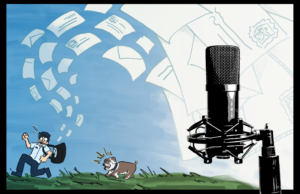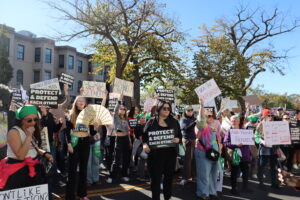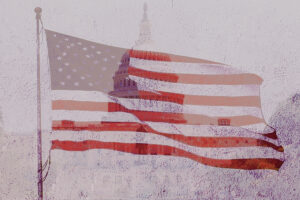Last semester, I saw keffiyehs all around campus, not just worn by Arab and Muslim students, but by students of all communities. Collectively outraged at the ongoing genocide in Gaza, swaths of the student community came together to demand a ceasefire. Georgetown University Students for Justice in Palestine organized demonstrations and walkouts, which dozens of students participated in. On Nov. 4, 2023, tens of thousands of demonstrators gathered in D.C.’s Freedom Plaza to demand an end to the violence. I remember that so many Georgetown students traveled to Freedom Plaza together that we couldn’t all fit in the same bus. The campus was alive and active with Palestinian solidarity.
But this semester, I don’t feel that same spirit for Palestine in the student body. And unfortunately, I’m not surprised.
Students are losing their momentum. The number of people actively fighting for Palestine are dwindling, gradually returning to just those who were active before October of last year. As a Muslim student, Palestine is still a top priority for our community. At every weekly Jummah khutbah, community gathering, or event, we are reminded of our responsibility to act. But outside of my Muslim community, the genocide in Gaza is barely acknowledged.
Dwindling support from allied communities is a common problem in activism. It’s happened before with Palestine—I remember an uptick in pro-Palestine posts on my Twitter timeline when Palestinian journalist Shireen Abu Akhel was killed by the Israeli Defense Forces. Support from new communities was incredibly motivating and exciting. But eventually, I watched that support die out. Once again, the few who have been fighting the whole time were left to fight alone. Now, watching this cycle repeat, I am filled with a frustration that has only grown after four years attending a predominantly white institution. To me, waning student support for Palestine, combined with the 2024 election, is reminiscent of a larger systemic issue: white liberalism.
The term “white liberalism” is often used as a critique of individuals who identify on the far-left of the political spectrum but do not reckon with the complex relationship between their own identities and beliefs. These “well-meaning white people” support marginalized communities as allies in their efforts to achieve societal equality, but in reality this phenomenon is not exclusive to white people. At surface level their support is welcomed and encouraged, but the greater issues punctuating the support of “white liberalism” are complex.
Beyond its fleeting nature—present only when an issue is novel—white liberalism fundamentally holds an outlook on activism that is out of touch with the communities it intends to support. “White liberalism” largely fosters a belief in individual political power and the effectiveness of abundant advocacy. As a result, “white liberals” have an idealistic view of activism, believing that as long as they keep trying, success will follow quickly. On the one hand, confidence in democracy’s power encourages constant action and strategic mobilization. However, this utopian view of our political system is laden with internalized white privilege. White communities’ genuine belief in their own political power is reflective of a political system that actually responds to their demands. At its core, the American government was designed to serve white people.
In contrast, non-white communities tend to have a more skeptical outlook on government responsiveness. They still organize and protest, but because of a history of governmental failures, they know that it will take a lot more than just their voices for political leaders to incite change—a process they know is long, complicated, and often, unsuccessful.
These conflicting outlooks create friction between marginalized groups and their allies. It can be extremely frustrating to hear a white ally tell them change is possible if they “just vote!”—a response that ignores the structural barriers to change embedded within electoral politics. These communities have been fighting for change long before white liberals even took up their cause. To have the pathway to change minimized to something as simple as voting is ignorant of the systemic difficulties marginalized groups face when trying to advocate for themselves. Although well-meaning, white allies’ “anything is possible” mentality is detached from the realistic mindset of marginalized communities, indicating a lack of understanding of the challenges they face.
Secondly, because white liberals are not directly impacted by the problems they advocate for, they have the privilege of selecting which issues to prioritize and when to prioritize them. They are able to make political concessions or pare down their commitment to a cause without actually facing the consequences of such concessions.
For example, in light of the Biden administration’s continued military support to Israel and its failure to bring an end to the violence in Palestine, many Muslim and Arab Americans opted to vote third-party in the 2024 presidential election. The goal was never about electing a third-party candidate or serving as a means to get Trump elected. The third-party movement was meant to show Democrats, in a tangible and measurable way, that if they are unresponsive to these communities’ demands, they will not receive their vote. Muslim and Arab Americans have grown tired of the Democratic Party’s failure to meet their demands. The American two-party system has for years allowed the Democratic Party to fall short on its promises unabashedly; they know that no matter how much they ignore these communities, they can count on their vote, as the only other “real” option is the Republican Party.
Meanwhile, white allies, who supported Arab and Muslim communities in demanding a ceasefire in Gaza, urged others to vote Harris-Walz. Those who had shown equal outrage over the genocide were now willing to settle on voting for an administration actively contributing to the very same issue they had been protesting. Many of these voters still considered Palestine in their decision, but ultimately decided that avoiding another Trump presidency was their top priority. Arguing that things in Gaza will only worsen under Trump and that Harris would be more open to a change in policy towards Palestine, they emphasized a need to vote Harris-Walz.
Again, this difference in the prioritization of voting issues is reflective of the subtle impacts of white privilege. While white liberals believed in their ability to sway a Democratic nominee’s policy on Gaza through advocacy, Muslim and Arab voters knew change would only come once politicians are forced to acknowledge the communities they are letting down.
After Trump’s victory, many Democrats were understandably upset. But in expressing their frustrations, they misplaced their anger. Believing that third-party votes caused Harris to lose, despite a lack of evidence, they blamed Arab and Muslim voters for another Trump presidency. Upset liberals took to social media, saying that they would not care when Trump turns Gaza into “a parking lot,” that they would no longer boycott companies with financial ties to Israel, and that they would turn a blind eye when Trump reinstates the Muslim ban.
Not only is this type of reaction incredibly hurtful to communities already in pain, but it demonstrates the potential for liberals to turn on the very communities they used to support. It suggests that their solidarity is unreliable, which jeopardizes the momentum and strength of social justice movements. Furthermore, it implies that liberals practice transactional activism: they will only support a cause so long as marginalized communities act and vote the way they want. This mindset is steeped in white supremacy: as long as white citizens get to dictate the actions of non-white people, they’ll be happy to throw them a bone here and there.
The pitfalls of white liberalism can be incredibly dangerous: marginalized communities may face prejudice from the people they least expect. Ultimately, it allows white communities to portray themselves as inclusive, diverse, and supportive while enabling microaggressions and allowing subconscious biases to persist.
For me, the hypocrisy of white liberalism hits close to home. A graduate of the Howard County Public School System in Maryland, I have seen white liberalism take its mask off before. Howard County prides itself on its inclusivity and diversity, and this isn’t unfounded. It is a non-majority county, meaning no one race makes up half of the total population. With less than half the population being white (47%), Black and Asian residents each make up about 20% of the population, and Hispanic residents make up 8%. However, the county’s schools are incredibly segregated by race and socioeconomic status. For example, over 72% of high school students participating in the Free and Reduced Price Meals Program attend just five of the district’s 12 high schools. In an effort to alleviate this problem, Superintendent Michael J. Martirano announced a redistricting plan in 2019. The plan, called Equity in Action, intended to bus students to different schools in an effort to reduce the school system’s socioeconomic segregation. The plan would have shifted the poverty rates of half the district’s schools closer to the districtwide average of 22.5% while simultaneously reducing overcrowding on some campuses.
But this proposal, in a self-proclaiming liberal community, was met with intense backlash. Parents of high-income families opposed the redistricting, not wanting their children to attend another county school due to stereotypes about its quality rooted in the socioeconomic status of the student body. The superintendent’s office received a stream of hate mail, saying “Blacks destroy school systems and schools” and “certain families and communities do not have strong values in healthy family structure, high expectations on education, or firm beliefs in raising kids with good characters.”
While other high schools were either majority Black or majority white, mine was a non-majority school. The redistricting protesters were not in our immediate community, but we still felt exposed to the ugly truths of our community. I remember sitting in class discussing the issue with a professor who had lived in Maryland during federal desegregation efforts decades earlier, listening to him recount the similarities. Our class sat in disappointed silence. Our faith in the integrity of liberal progressiveness was shaken, and our trust in those who called themselves our allies shattered. The love and empathy our community upheld was proving itself to be a facade. It all felt cruelly ironic given the county’s motto: “choose civility.”
It’s important to note that the parents protesting the proposal were not all white. They were joined by several East Asian and South Asian parents. Though not white themselves, they were demonstrating the same behaviors and qualities of white liberalism. Herein lies another hidden danger: white liberalism is not exclusive to white people. Oftentimes, when racial minorities are able to climb the socioeconomic ladder, they begin to view themselves as enjoying the same privileges of their white counterparts. They internalize the privileges of whiteness and the societal structures enabling racism and classism. When white liberalism permeates non-white communities, we lose another pillar of united, intersectional activism.
Somehow, it can be more hurtful to see someone say they support you, then contradict themselves in their actions, than it is to see someone be overtly prejudiced. While racists and xenophobes are upfront about their distaste for non-white communities, white liberals fail to acknowledge the ways in which they hurt marginalized communities and their efforts. Instead, they praise themselves for being progressive and socially correct.
In order for us to make meaningful change, it is essential to stay critical of our methods and the implementation of our advocacy. Allyship is necessary, but we must acknowledge and unroot its racist undertones. Cleansing liberalism of its tendency to be shallow and performative is the only way for us to move past performative activism and achieve true solidarity.





